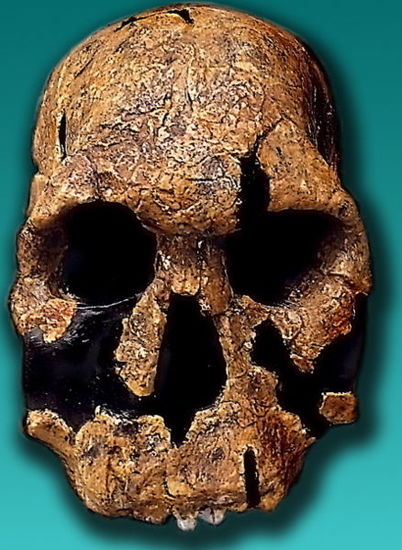The Best Places to See Hominid Bones Online, Part II
The Internet is full of great websites where you can play with hominid fossils
![]()

KNM-ER 1470, a Homo rudolfensis specimen, is one of the fossils you can examine at African Fossils. Image: José-Manuel Benito Álvarez/Wikicommons
Last fall, I offered my picks for the best places to see hominid bones online. I thought it was time to share some more great human evolution Web sites that I’ve discovered.
Fossilized.org: This site is filled with a ton of information on the different places where hominid fossils and stone tools have been found. The homepage is a world map locating the archaeological sites. Next to the map is a list of some of these places; clicking on a name brings up a satellite image of the area and more information on the location’s significance. The site also includes a timeline of important events in the history of paleoanthropology, a geologic timescale and a list of all the hominid species, including the year the species was first recognized. Anthropologist William Henry Gilbert of California State University, East Bay made the Web site.
African Fossils: A virtual anthropology lab that feels like a video game, this site is the brainchild of Louise Leakey, Louis and Mary Leakey’s granddaughter. It displays specimens from the collections of the National Museums of Kenya. Still a work in progress, the site lets you navigate through the lab and click on different objects to learn more about them. The best part is playing with the digital, 3-D hominid fossils and rotating them to see the specimens from different angles.
Ardipithecus Handbook: Brought to you by the Discovery Channel, this Web site is an interactive guide to the approximately four-million- to six-million-year-old genus, with a special emphasis on the famous skeleton named Ardi. The handbook offers background on Ethiopia’s Middle Awash, where Ardi and other hominids have been found—including an interactive map that locates and describes different hominid fossils discoveries—as well as a discussion of the genus’s place in the human family tree. The site also has an interactive Ardi skeleton that provides 3-D views of different bones.
Bones, Stones and Genes: The Origin of Modern Humans lecture series: The subject of the Howard Hughes Medical Institute’s 2011 Holiday Lectures was human evolution, and the institute has archived high-quality videos of these talks. The lectures are given by top anthropologists and are a great introduction to the science of human evolution. Paleoanthropologist Tim White of the University of California, Berkeley discusses his Middle Awash field site, where his team found Ardi and the 160,000-year-old Herto fossils, some of the earliest remains of Homo sapiens. Genetecist Sarah Tishkoff of the University of Pennsylvania offers a tutorial in human genetics. And archaeologist John Shea of Stony Brook University describes the earliest stone tools and the ways in which scientists study them. His talk also includes tool-making demonstrations.
/https://tf-cmsv2-smithsonianmag-media.s3.amazonaws.com/accounts/headshot/science-erin-wyman-240.jpg)
/https://tf-cmsv2-smithsonianmag-media.s3.amazonaws.com/accounts/headshot/science-erin-wyman-240.jpg)